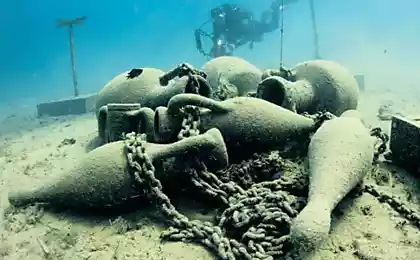953
10 great civilizations, has ceased to exist
Aeterna historia
history of mankind can be compared with the biography of the same family - with the passage of time some members of the household going, others are born, and everyone lives in his own life, leaving certain memories about yourself. In the case of a global 'family »homo sapiens as its members were whole civilizations - some of them manage to survive for thousands of years, and some people are not given stretch and several centuries, but anyway, the place lost civilization immediately take the following - in This is the great sense of justice and a great History.
1. Civilization olmekov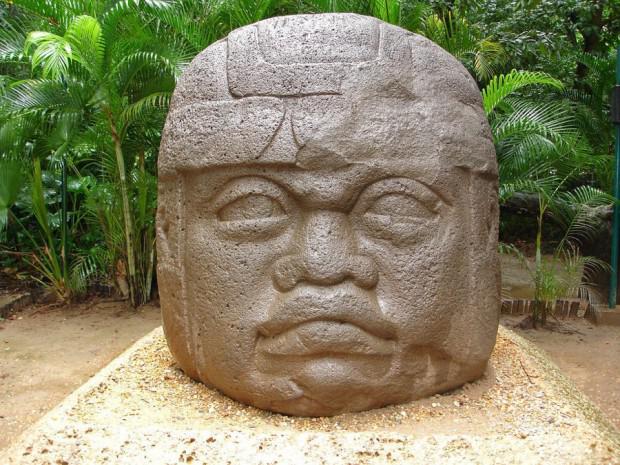
Olmecs - one of the oldest civilizations of Central America, with an outstanding culture and unusually high for its time, the level of development of science and technology.
"Calling card" of the Olmecs are considered the giant sculpture in the form of heads, located in present-day Mexico. The flowering of Olmec state fell on the period between the 1500th and 400th years BC, according to historians, this nation has achieved impressive success in architecture, agriculture, medicine, literature and other fields of knowledge. In the Olmec had a pretty accurate calendar and mathematical system, which used the number "0", which can be considered a breakthrough.

Having existed for over a thousand years, the Olmec civilization for unclear reasons still declined, but on its ruins have other states, such as ...
2. Empire atstekov
"Golden Age" of the Aztec civilization is the period between the 1428th and 1521st years - at this time the empire covers a huge territory, where, according to some estimates, about 5 million people, while the population of its capital, Tenochtitlan, is located on the site of the modern Mexico, is about 200 thousand.
The Aztecs much borrowed from the Olmec civilization, including - religious beliefs, ritual games, the tradition of human sacrifice, language, calendar, and some of the achievements of science and culture. The Aztec Empire was one of the richest and most highly developed countries of pre-Columbian America - enough to mention even the most complicated of them built aqueducts, designed for the irrigation of famous floating gardens.

With the exclusion of the Aztec state from the rest of the world, and along with the state itself, it was over, when the squad of Spanish conquistador Hernan Cortes was allowed entry into Tenochtitlan. You can imagine the surprise of the Spaniards, is expected to meet with the "primitive barbarians" - their eyes appeared a huge rich city with wide streets and stunningly beautiful architecture.
Perhaps, greed, envy Spaniards to the wealth of citizens, as well as European diseases and modern weapons of the conquistadors, and led to the destruction
Aztec state and the genocide of a great nation, and just a few years has fallen victim to European invaders another Indian civilization ...
3. Inca Empire

The State Inca, occupies the territory of modern Peru, Argentina, Bolivia, Chile, Colombia and Ecuador, lasted more than three centuries - since the beginning of XIII-th to the end of XVI-th, when the country came under the conquistadors Spaniard Francisco Pizarro.

The capital of the Inca Empire was located in the mountains, on the site of the modern city of Cusco. Due to an unusually high level at the time of the Incas were able to build a technology effective system of agriculture, transforming the slopes into fertile fields and developing technologies for their irrigation. On the highest skill of the Inca architects evidence extant structure of the city of Machu Picchu and other facilities. On the basis of astronomical observations and their mathematical system Incas created a detailed calendar, they have developed their own writing system, achieved notable successes in medicine and other sciences. Scientists are still scratching their heads as to the people, does not have modern tools and devices, it was possible to build architecture and engineering masterpieces.
Meeting with European civilization was for the Incas (and other indigenous peoples of the Americas) of this tragedy - a large part of the population was wiped out by European diseases and weapons of the conquistadors began strife of different tribes, and their cities were looted.
Such is the sad fate of the once powerful country, the size of which was comparable with the largest Eurasian state, for example, what we call ...
4. Persian imperiya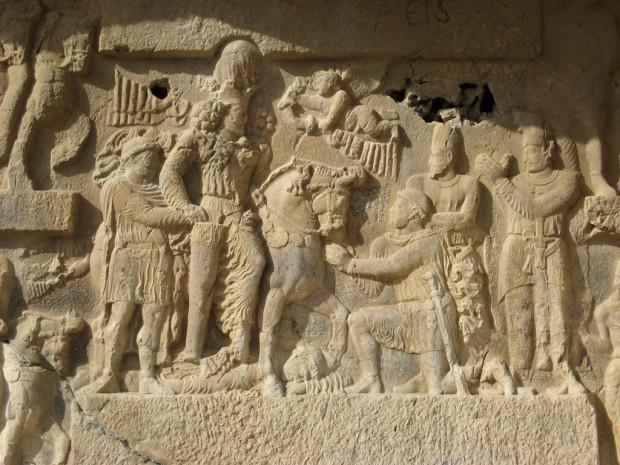
Persian empire for several centuries was one of the major players on the world political arena. With outstanding technology and knowledge, the Persians built a unique in its branching and the quality of the network of roads linking the most developed city of the empire, which had no parallel developed sewerage system, have created the alphabet and numbers. They were the first to use the assimilation of the conquered peoples instead of destruction, trying to make religious and cultural traditions of foreigners a part of their culture, so they managed to create one of the largest and most influential countries in the world, such examples in the history of mankind is quite rare, and one of them ... < br />
5. Macedonian imperiya
His existence of this state, by and large, an obligation to one man - Alexander the Great. His empire covered a part of modern Greece and Egypt, the territory of the former power of the Achaemenid and India. Alexander managed to subdue a lot of thanks to his talent and high level of general training of troops. Not the least role in the creation of the empire also played the assimilation of the peoples of the occupied territories - marriages between soldiers of the Macedonian army and a representative of the local population.
After the death of Alexander the Great's empire lasted about three centuries. As a result of the numerous conflicts between the heirs of the legendary conqueror of the country it fell apart, and most of it became part of another great country called ...
6. Roman imperiya
Roman civilization was born in the city-states on the territory of modern Italy, the main of which was, of course, Rome. The empire was formed under the strong influence of Greek civilization - the Romans borrowed from the Greeks, many of the ideas of the state and social system, which they were able to successfully translate into Ms.
zn, bringing on the world map appeared one of the greatest empires in the history of mankind. Under the rule of the Caesars disparate regions of Italy were united, and at the expense of success Roman generals young state gradually became the most influential empire of the world, includes modern Italy, Spain, Greece, France, large parts of Germany and Great Britain, region of North Africa (including - Egypt) and vast areas of the Middle East.
The triumphant march of the Romans over the world prevented the collapse of the empire in the western and eastern parts. The history of the Western Roman Empire ended in the 476th year, the Eastern Roman Empire, which is also called the Byzantine, lasted almost a thousand years longer - until 1453, the year.
Uniform Roman Empire was one of the largest in the history of mankind, it surpassed in size only a few giants, for example ...
7. Mongolian imperiya
States covered by the most extensive in the history of the adjacent territory, came into being at the behest of the great Mongol commander, whose name has become almost synonymous with successful aggressive policy. History of Genghis Khan's empire lasted a little more than one and a half centuries, from 1206, the year of 1368-th - for this time under the authority of the first Great Khan and his successors proved to be the territory of modern Russia, India, China and some countries in Eastern Europe, with a total area of occupied lands It was about 33 million km2. The military successes of the Mongols explained, first of all, the extensive use of cavalry - at their opponents simply did not have the chance to deal with the countless hordes of skilled riders, appearing as if from nowhere and breaks infantry to shreds.
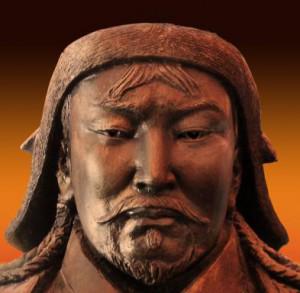
From continuing aggressive policy of the Mongols kept Ugadei death of the Great Khan, the third son of Genghis Khan. Who knows - if not coincidence, perhaps, Western Europe would be met with all the "charm" of the Mongol invasion. During the struggle for power, several Mongolian political leaders, the empire was divided into four states - the Golden Horde, Ilkhanate in the Middle East, the empire Yuan in China and Chagatai ulus in Central Asia.
It is worth noting that the Mongols were not mindless barbarians, what they often try to present in his works Western historians. In the occupied territories they administered fairly humane with respect to indigenous laws - for example, strictly forbidden to pursue the locals for their religious beliefs. Such progressive domestic policy should learn such elite of a state like ...
8. Ancient Egipet
Located in the valley of the Nile River state in various forms existed more than 4 thousand years. Stories Egyptian civilization devoted countless studies and thousands of books and documentary films, but scientists continue to argue about the technologies and knowledge of the ancient Egyptians, which allowed them to create, for example, the famous pyramids of Giza and other wonders of architectural thought.
The heyday of ancient Egypt is characterized by the highest level of development of the traditional religion of the Egyptian language, medicine, architecture, agricultural technology, mathematics, and different kinds of art. Egypt is one of three ancient states in the world, among them - Sumerian and
India civilization, the latter is also known as ...
9. Harappan tsivilizatsiya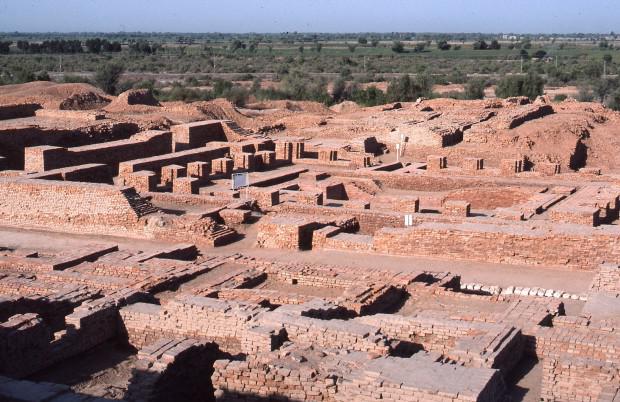
India a civilization is not as well known as ancient Egypt, although both states were formed around the same time - in the middle of the fourth millennium BC. Period of civilization, was situated in what is now Pakistan, covering more than a thousand years.
One of the distinctive features of the Indus civilization can be considered peaceful, constructive policy of the authorities, with both internal and external.
While the rulers of other countries fought wars and intimidated its citizens, considering the main instrument for strengthening the power of violence, the first person Harappan state all their efforts on the development of society, strengthening the economy and improving technology.
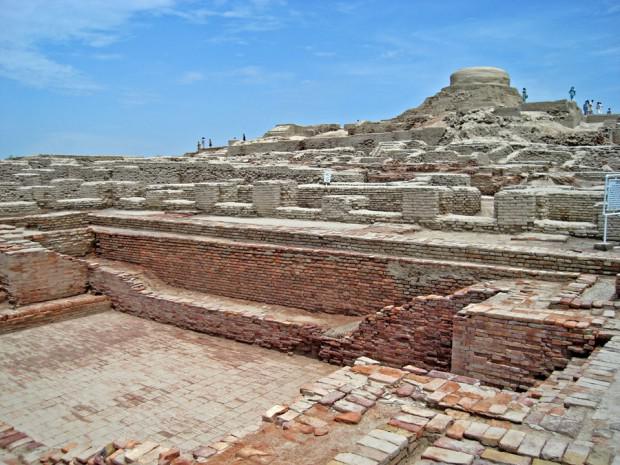
Archaeologists claim that in the study of Indian civilization settlements, they found only a small number of weapons, and the completely absent human remains with signs of violent death, which allows us to conclude the peace-loving states Indies.
Harapptsy lived in a clean, well-planned cities with sewage systems and water supply, almost every home has a bathroom and toilet. Unfortunately, we know little about Indian civilization, but the available information indicates that it was one of the most progressive countries of that era.
Friendliness and peacefulness were also characteristic of the people, to establish a state in the Caribbean - we know it under the name ...
10. Aravaki
Arawak - the collective name of the whole group of peoples who inhabited the islands of the Caribbean and northern South America. It was the first of the Arawak Indian tribes met with Christopher Columbus on his arrival in the New World. According to various estimates, during the first expedition

Columbus Island Arawak population ranged from 300 to 400 thousand people, although some sources give different figures - up to several million.
With development of culture, the Arawaks were very friendly to each other and to strangers - on the testimony of members of the expedition, the natives cried approaching the islands of the European courts "Taínos!", Which translated from the local dialect means "peace." Hence the common name went second island Arawak tribes - Taino.
Taino were engaged in trade, agriculture, fishing and hunting, unlike many other Indian tribes, they are practically not involved in military conflicts. The only people with whom the Arawaks were enemies, were cannibals who lived on the territory of the modern state of Puerto Rico.
Arawakan civilization is characterized by the highly organized structure of society, its hierarchical and public commitment to universal values - for example, Arawak women have the right to refuse a man in a marriage that was unheard of for the Indians, however, as for many Europeans of that time.
With the arrival of the conquerors state Arawak quickly went into decline - the population was reduced at times due to the lack of immunity to diseases of the Old World and the armed conflict with the Spaniards. Currently Taino considered extinct, although some Caribbean islands remains of the culture of this once highly developed civilization.
via factroom.ru

history of mankind can be compared with the biography of the same family - with the passage of time some members of the household going, others are born, and everyone lives in his own life, leaving certain memories about yourself. In the case of a global 'family »homo sapiens as its members were whole civilizations - some of them manage to survive for thousands of years, and some people are not given stretch and several centuries, but anyway, the place lost civilization immediately take the following - in This is the great sense of justice and a great History.
1. Civilization olmekov

Olmecs - one of the oldest civilizations of Central America, with an outstanding culture and unusually high for its time, the level of development of science and technology.
"Calling card" of the Olmecs are considered the giant sculpture in the form of heads, located in present-day Mexico. The flowering of Olmec state fell on the period between the 1500th and 400th years BC, according to historians, this nation has achieved impressive success in architecture, agriculture, medicine, literature and other fields of knowledge. In the Olmec had a pretty accurate calendar and mathematical system, which used the number "0", which can be considered a breakthrough.

Having existed for over a thousand years, the Olmec civilization for unclear reasons still declined, but on its ruins have other states, such as ...
2. Empire atstekov

"Golden Age" of the Aztec civilization is the period between the 1428th and 1521st years - at this time the empire covers a huge territory, where, according to some estimates, about 5 million people, while the population of its capital, Tenochtitlan, is located on the site of the modern Mexico, is about 200 thousand.
The Aztecs much borrowed from the Olmec civilization, including - religious beliefs, ritual games, the tradition of human sacrifice, language, calendar, and some of the achievements of science and culture. The Aztec Empire was one of the richest and most highly developed countries of pre-Columbian America - enough to mention even the most complicated of them built aqueducts, designed for the irrigation of famous floating gardens.

With the exclusion of the Aztec state from the rest of the world, and along with the state itself, it was over, when the squad of Spanish conquistador Hernan Cortes was allowed entry into Tenochtitlan. You can imagine the surprise of the Spaniards, is expected to meet with the "primitive barbarians" - their eyes appeared a huge rich city with wide streets and stunningly beautiful architecture.
Perhaps, greed, envy Spaniards to the wealth of citizens, as well as European diseases and modern weapons of the conquistadors, and led to the destruction
Aztec state and the genocide of a great nation, and just a few years has fallen victim to European invaders another Indian civilization ...
3. Inca Empire

The State Inca, occupies the territory of modern Peru, Argentina, Bolivia, Chile, Colombia and Ecuador, lasted more than three centuries - since the beginning of XIII-th to the end of XVI-th, when the country came under the conquistadors Spaniard Francisco Pizarro.

The capital of the Inca Empire was located in the mountains, on the site of the modern city of Cusco. Due to an unusually high level at the time of the Incas were able to build a technology effective system of agriculture, transforming the slopes into fertile fields and developing technologies for their irrigation. On the highest skill of the Inca architects evidence extant structure of the city of Machu Picchu and other facilities. On the basis of astronomical observations and their mathematical system Incas created a detailed calendar, they have developed their own writing system, achieved notable successes in medicine and other sciences. Scientists are still scratching their heads as to the people, does not have modern tools and devices, it was possible to build architecture and engineering masterpieces.
Meeting with European civilization was for the Incas (and other indigenous peoples of the Americas) of this tragedy - a large part of the population was wiped out by European diseases and weapons of the conquistadors began strife of different tribes, and their cities were looted.
Such is the sad fate of the once powerful country, the size of which was comparable with the largest Eurasian state, for example, what we call ...
4. Persian imperiya

Persian empire for several centuries was one of the major players on the world political arena. With outstanding technology and knowledge, the Persians built a unique in its branching and the quality of the network of roads linking the most developed city of the empire, which had no parallel developed sewerage system, have created the alphabet and numbers. They were the first to use the assimilation of the conquered peoples instead of destruction, trying to make religious and cultural traditions of foreigners a part of their culture, so they managed to create one of the largest and most influential countries in the world, such examples in the history of mankind is quite rare, and one of them ... < br />
5. Macedonian imperiya

His existence of this state, by and large, an obligation to one man - Alexander the Great. His empire covered a part of modern Greece and Egypt, the territory of the former power of the Achaemenid and India. Alexander managed to subdue a lot of thanks to his talent and high level of general training of troops. Not the least role in the creation of the empire also played the assimilation of the peoples of the occupied territories - marriages between soldiers of the Macedonian army and a representative of the local population.
After the death of Alexander the Great's empire lasted about three centuries. As a result of the numerous conflicts between the heirs of the legendary conqueror of the country it fell apart, and most of it became part of another great country called ...
6. Roman imperiya

Roman civilization was born in the city-states on the territory of modern Italy, the main of which was, of course, Rome. The empire was formed under the strong influence of Greek civilization - the Romans borrowed from the Greeks, many of the ideas of the state and social system, which they were able to successfully translate into Ms.
zn, bringing on the world map appeared one of the greatest empires in the history of mankind. Under the rule of the Caesars disparate regions of Italy were united, and at the expense of success Roman generals young state gradually became the most influential empire of the world, includes modern Italy, Spain, Greece, France, large parts of Germany and Great Britain, region of North Africa (including - Egypt) and vast areas of the Middle East.
The triumphant march of the Romans over the world prevented the collapse of the empire in the western and eastern parts. The history of the Western Roman Empire ended in the 476th year, the Eastern Roman Empire, which is also called the Byzantine, lasted almost a thousand years longer - until 1453, the year.
Uniform Roman Empire was one of the largest in the history of mankind, it surpassed in size only a few giants, for example ...
7. Mongolian imperiya

States covered by the most extensive in the history of the adjacent territory, came into being at the behest of the great Mongol commander, whose name has become almost synonymous with successful aggressive policy. History of Genghis Khan's empire lasted a little more than one and a half centuries, from 1206, the year of 1368-th - for this time under the authority of the first Great Khan and his successors proved to be the territory of modern Russia, India, China and some countries in Eastern Europe, with a total area of occupied lands It was about 33 million km2. The military successes of the Mongols explained, first of all, the extensive use of cavalry - at their opponents simply did not have the chance to deal with the countless hordes of skilled riders, appearing as if from nowhere and breaks infantry to shreds.

From continuing aggressive policy of the Mongols kept Ugadei death of the Great Khan, the third son of Genghis Khan. Who knows - if not coincidence, perhaps, Western Europe would be met with all the "charm" of the Mongol invasion. During the struggle for power, several Mongolian political leaders, the empire was divided into four states - the Golden Horde, Ilkhanate in the Middle East, the empire Yuan in China and Chagatai ulus in Central Asia.
It is worth noting that the Mongols were not mindless barbarians, what they often try to present in his works Western historians. In the occupied territories they administered fairly humane with respect to indigenous laws - for example, strictly forbidden to pursue the locals for their religious beliefs. Such progressive domestic policy should learn such elite of a state like ...
8. Ancient Egipet

Located in the valley of the Nile River state in various forms existed more than 4 thousand years. Stories Egyptian civilization devoted countless studies and thousands of books and documentary films, but scientists continue to argue about the technologies and knowledge of the ancient Egyptians, which allowed them to create, for example, the famous pyramids of Giza and other wonders of architectural thought.
The heyday of ancient Egypt is characterized by the highest level of development of the traditional religion of the Egyptian language, medicine, architecture, agricultural technology, mathematics, and different kinds of art. Egypt is one of three ancient states in the world, among them - Sumerian and
India civilization, the latter is also known as ...
9. Harappan tsivilizatsiya

India a civilization is not as well known as ancient Egypt, although both states were formed around the same time - in the middle of the fourth millennium BC. Period of civilization, was situated in what is now Pakistan, covering more than a thousand years.
One of the distinctive features of the Indus civilization can be considered peaceful, constructive policy of the authorities, with both internal and external.
While the rulers of other countries fought wars and intimidated its citizens, considering the main instrument for strengthening the power of violence, the first person Harappan state all their efforts on the development of society, strengthening the economy and improving technology.

Archaeologists claim that in the study of Indian civilization settlements, they found only a small number of weapons, and the completely absent human remains with signs of violent death, which allows us to conclude the peace-loving states Indies.
Harapptsy lived in a clean, well-planned cities with sewage systems and water supply, almost every home has a bathroom and toilet. Unfortunately, we know little about Indian civilization, but the available information indicates that it was one of the most progressive countries of that era.
Friendliness and peacefulness were also characteristic of the people, to establish a state in the Caribbean - we know it under the name ...
10. Aravaki

Arawak - the collective name of the whole group of peoples who inhabited the islands of the Caribbean and northern South America. It was the first of the Arawak Indian tribes met with Christopher Columbus on his arrival in the New World. According to various estimates, during the first expedition

Columbus Island Arawak population ranged from 300 to 400 thousand people, although some sources give different figures - up to several million.
With development of culture, the Arawaks were very friendly to each other and to strangers - on the testimony of members of the expedition, the natives cried approaching the islands of the European courts "Taínos!", Which translated from the local dialect means "peace." Hence the common name went second island Arawak tribes - Taino.
Taino were engaged in trade, agriculture, fishing and hunting, unlike many other Indian tribes, they are practically not involved in military conflicts. The only people with whom the Arawaks were enemies, were cannibals who lived on the territory of the modern state of Puerto Rico.
Arawakan civilization is characterized by the highly organized structure of society, its hierarchical and public commitment to universal values - for example, Arawak women have the right to refuse a man in a marriage that was unheard of for the Indians, however, as for many Europeans of that time.
With the arrival of the conquerors state Arawak quickly went into decline - the population was reduced at times due to the lack of immunity to diseases of the Old World and the armed conflict with the Spaniards. Currently Taino considered extinct, although some Caribbean islands remains of the culture of this once highly developed civilization.
via factroom.ru
Pandas - forced vegans
There is a connection between the low-frequency sound and the appearance of "ghosts"









